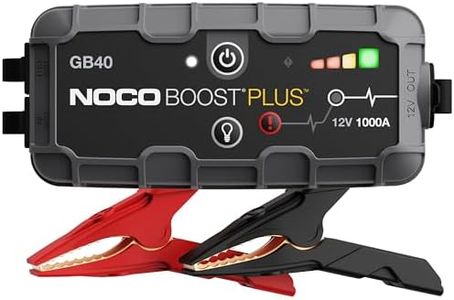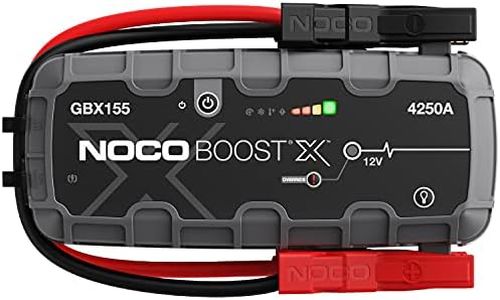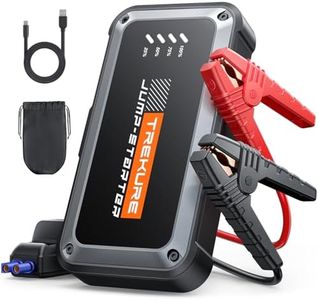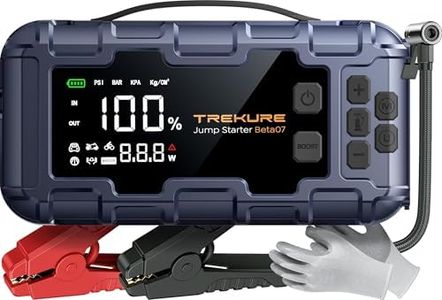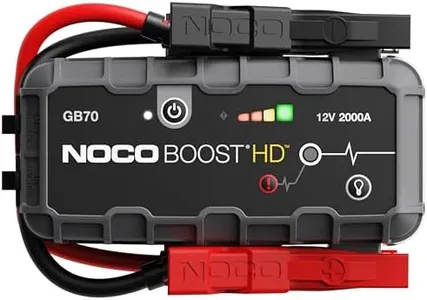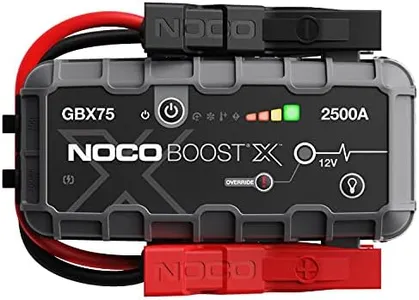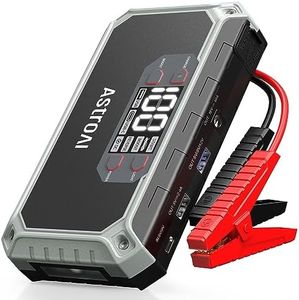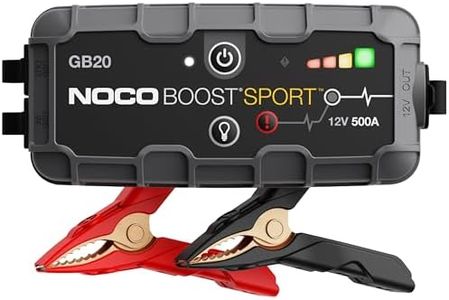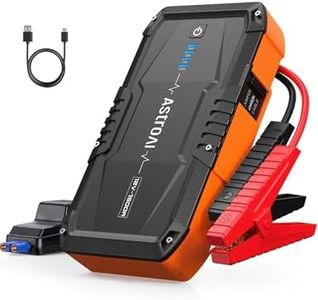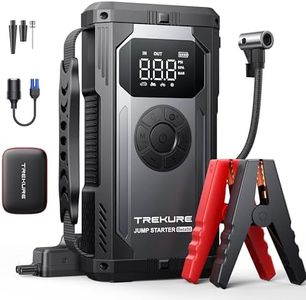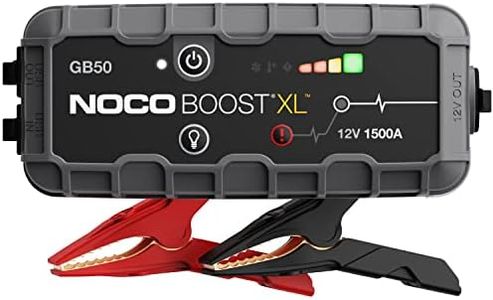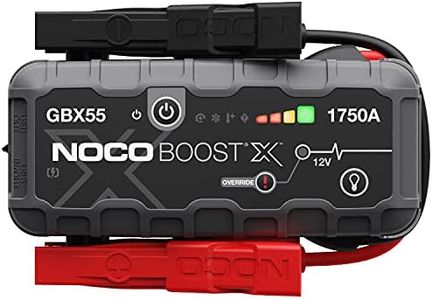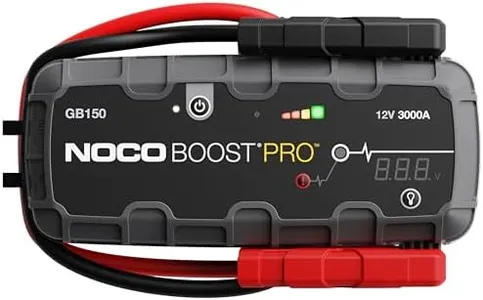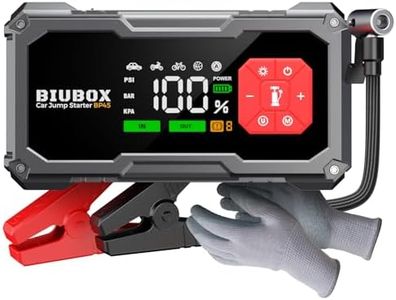We Use CookiesWe use cookies to enhance the security, performance,
functionality and for analytical and promotional activities. By continuing to browse this site you
are agreeing to our privacy policy
10 Best Electric Car Jump Starter
From leading brands and best sellers available on the web.By clicking on a link to a third party's website, log data is shared with that third party.
Buying Guide for the Best Electric Car Jump Starter
Picking an electric car jump starter is all about being prepared for emergencies without needing another vehicle’s help. These handy devices can get your car running if the battery dies, whether you’re in your driveway or out on a trip. To choose the right one, focus on key features that impact performance, usability, and safety. Understanding each of these features will help you select a jump starter that matches your car’s needs and fits easily into your life.Peak AmpsPeak Amps refers to the maximum amount of current the jump starter can deliver in a surge to help start your car. This matters because car engines need different amounts of power to start: small cars need less, while large trucks or SUVs require more. Devices are often split into ranges, such as 400-600 amps for compact cars, 600-1000 amps for most sedans and mid-size vehicles, and 1000+ amps for big vehicles like trucks and SUVs. When picking a starter, know your car’s engine size: for a typical sedan, mid-range amps are enough, but for larger engines or frequent use in cold climates, get a higher amp model.
Battery Capacity (mAh)Battery capacity, usually measured in milliamp hours (mAh), tells you how much electricity the jump starter holds. Higher capacity means more jump starts or extra gadget charging between recharges. You’ll find devices from about 8000mAh to 20000mAh or more. Lower capacity units are smaller and lighter—great for occasional use and fitting in glove boxes—while high-capacity ones are bulkier but provide more jumps and can charge phones or tablets. If you want a starter for emergencies only, a lower capacity may be fine, but if you want to use it for multiple cars or as a backup power bank, go higher.
Voltage CompatibilityVoltage compatibility ensures the jump starter matches your vehicle’s electrical system, which is usually 12V for most passenger cars and 24V for larger trucks or commercial vehicles. Always double-check your car’s battery voltage and pick a match; using the wrong voltage won’t work and could harm the car or the device. For regular cars, a 12V starter is standard, while those with fleets or bigger vehicles might need a 24V option.
Size and PortabilitySize and portability refer to how easy the jump starter is to store and carry. Small, lightweight models are simple to fit in your glove compartment or a small bag and are suitable for people who want to keep one on hand at all times. Larger models are heavier and may be kept in the trunk, but often offer more power and features. Think about where you’ll store it and whether portability or extra features matters more for your lifestyle.
Safety FeaturesSafety features like reverse polarity protection, spark-proof technology, and short circuit safeguards help prevent accidents when connecting the starter to your battery. These features are crucial for peace of mind, especially for less experienced users. More advanced models often bundle several protections. If you’re not confident around car batteries or want maximum safety for anyone in the family to use it, look for comprehensive safety features.
Extra FeaturesMany jump starters come with extras, such as built-in flashlights, USB charging ports, air compressors, or even digital displays. These can make your device more useful in general emergencies—lighting your way at night, inflating tires, or charging your phone. Consider what other situations you might use the starter for: if you travel a lot or want it to double as a power bank, look for models offering these bonuses.
